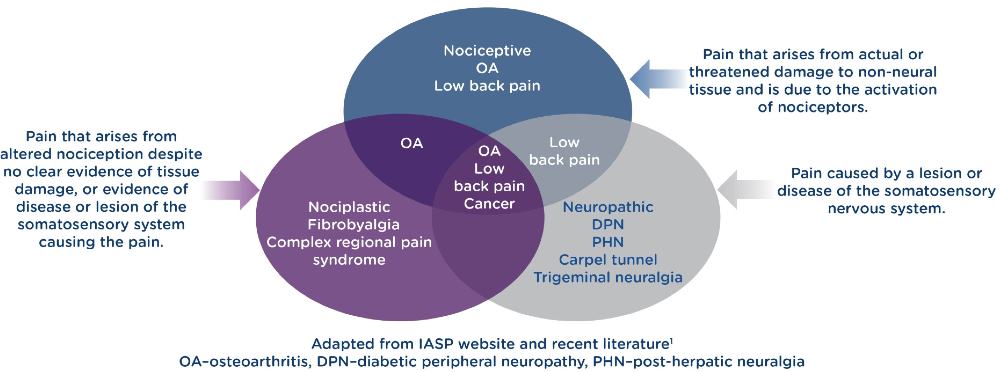Chronic
Pain
Chronic pain is pain that continues beyond the normal time of healing. It can be classified according to its pathophysiology, though many conditions involve different types of pain:

The Unmet Need in Chronic Pain and the Opioid Epidemic
Prescription opioids have been the mainstay of treatment for patients experiencing moderate to severe pain, with more than 142 million prescriptions written for opioids in 2020 in the U.S.–over 43 prescriptions per 100 Americans2. This is despite the frequently reported opioid-induced side effects such as nausea, vomiting, constipation and somnolence, the potential for life-threatening respiratory depression, and the risk of misuse, abuse and diversion that has led to the opioid epidemic in the U.S.
In 2020, 9.3 million people over the age of 12 reported misusing prescription opioid pain relievers3, opioids were involved in 68,630 overdose deaths4 and annually, opioids account for over 305,000 emergency department visits for non-fatal overdoses5. The health, societal and economic consequences of opioid misuse are devastating.
In spite of these limitations, there have been few advances in the field of chronic pain management. Many of the opioid molecules were discovered decades ago (morphine was first approved in 1941, and oxycodone in 1950), yet continue to be extensively used due to their powerful efficacy. NSAIDs/COX-2 inhibitors are also widely used for nociceptive/inflammatory conditions, but do not offer such powerful efficacy, and are associated with potentially serious gastrointestinal, cardiovascular and bleeding side effects. Neuropathic pain is commonly treated with gabapentinoids though they often have unpredictable efficacy and dose-limiting side effects.
The need therefore exists for novel, non-opioid treatments for chronic pain that are effective and well-tolerated, without the risks associated with opioids.
- Trouvin, AP and Perrot, S. Best Pract Res Clin Rheumatol. 2019;33(3):101415
- www.cdc.gov/drugoverdose/maps/rxrate-maps/index.html, accessed March 2022
- SAMSHA.gov Key Substance Use and Mental Health Indicators in the US: Results from the 2020 National Survey on Drug Use and Health. P14, Fig 9
- https://wonder.cdc.gov/controller/saved/D77/D266F821, accessed March 2022
- Vivolo-Kantor AM, et al. MMWR Morb Mortal Wkly Rep 2020;69:371–376
